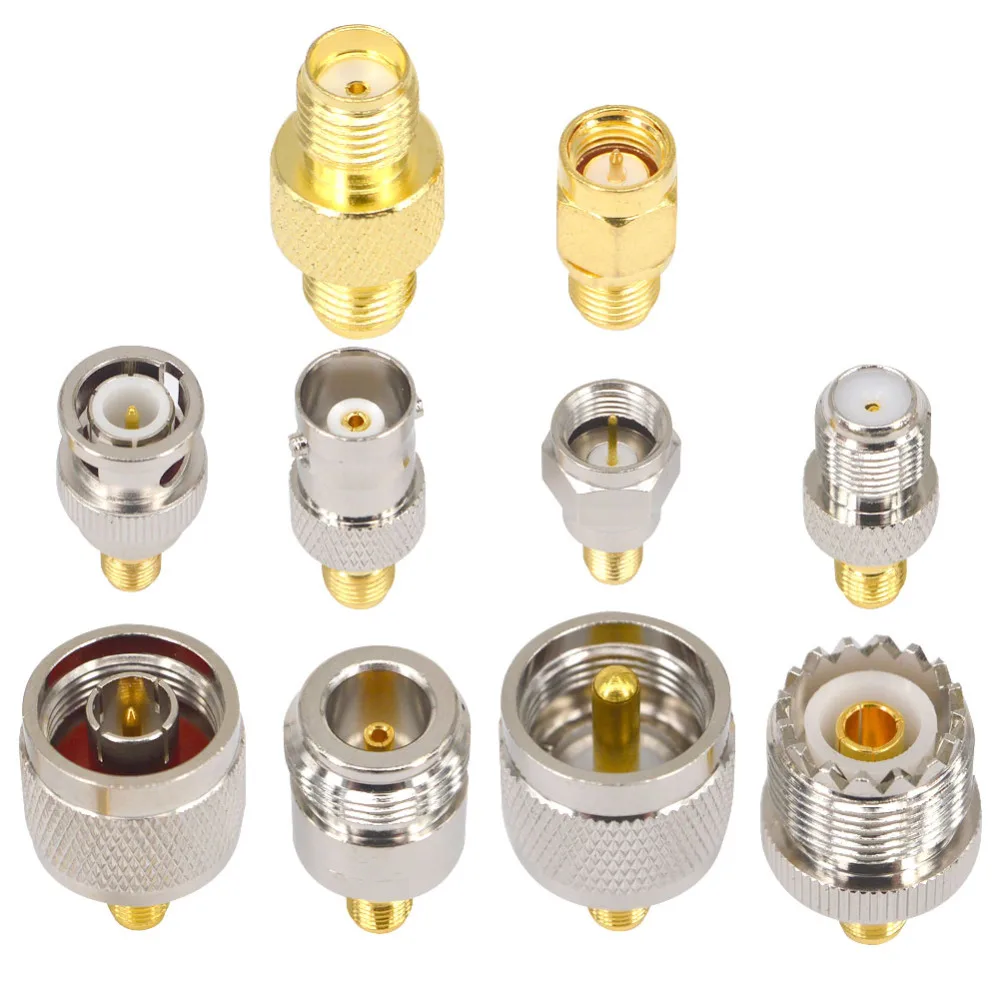

Crimp-on ConnectorĪdditionally, there are two variations of the crimp-on BNC connector: 2-piece and 3-piece. This indicates that they are not only able to eliminate at least one more piece of material during a typical run, but also that they are exceptionally skilled at what they do because they do it frequently.
BNC VS F CONNECTOR INSTALL
Many installers also favor method two because F-connectors can be used to install most TVs as well as surveillance systems (the Mammoth Security office in Middletown, CT can assist you with this). Since the coax core is visible in the second method and there is no need to guess the length, there is very little room for error. There are two methods for installing BNC compression connectors: 1) use a one-piece A compression F connector was attached to the coax cable before the BNC compression connector was screwed on. A screw-on BNC connector is attached to the cable after an F connector, just like with method number 2 above. The F-Crimp connector technique is similar to the F-compression connector technique, but it uses a crimp-on connector rather than a compression one. Despite the misconception that twist-on BNCs are unreliable because they do not attach as firmly as crimp-on or compression connectors, they can function properly when the cable is properly prepared. If the cable is not first stripped, tools may, of course, be required. This kind of connector is easy to use and doesn’t need any special tools because, as its name suggests, you just twist it onto the coax cable to attach it. Types Of BNC ConnectorsīNC connectors typically come in four different varieties: Nearly always, BNC connectors are used to terminate coaxial ethernet cables. Due to its low-signal-loss architecture, BNC is also utilized in high-grade analog communications test equipment and avionics. In place of coaxial connectors, the Bayonet Neill-Concelman Connector (BNC connector) is a coaxial RF (Radio frequency) electrical connector type.Ī BNC connector is used in electronic architectures like audio, video, and networking to connect various radio frequencies up to 3GHz and voltages under 500V DC.
BNC VS F CONNECTOR SERIES
BNC VS F CONNECTOR CODE
Code of Federal Regulations: 47 CFR 15.203, available at ^ "TNC Connectors | Wellshow -RF Connector, RF Coaxial Cable Assembly, GSM, GPS, WiFi Antenna Manufacturer".^ "Electronic Warfare and Radar Systems Engineering Handbook".Plug on the female connector and receptacle on the male when dealing with RP-TNC. As of 2013, leading manufacturers are still using RP-TNC connectors on their Wi-Fi equipment. The FCC considered that the RP-TNC was acceptable in preventing consumers changing the antenna but by 2000 it regarded them as readily available, though delaying its ruling indefinitely. īecause they were not readily available, RP-TNC connectors have been widely used by Wi-Fi equipment manufacturers to comply with specific local regulations, such as those from the FCC, which are designed to prevent consumers from connecting antennas which exhibit gain and therefore breach compliance. This is usually achieved by incorporating the female contacts normally found in jacks into the plug, and the male contacts normally found in plugs into the jack. Reverse-polarity TNC (RP-TNC, sometimes RTNC) is a variation of the TNC specification which reverses the polarity of the interface.

Right, a standard male TNC connector on a UHF antenna.

Variations Reverse-polarity TNC Left, a male RP-TNC connector from a 2.4GHz antenna. The TNC connector features a 7/16"-28 thread, not to be confused with a 7/16 DIN connector, which is the diameter of the mating surfaces as specified in millimeters.

Invented in the late 1950s and named after Paul Neill of Bell Labs and Carl Concelman of Amphenol, the TNC connector has been employed in a wide range of radio and wired applications. It has better performance than the BNC connector at microwave frequencies. The connector has a 50 Ω impedance and operates best in the 0–11 GHz frequency spectrum. The interface specifications for the TNC and many other connectors are referenced in MIL-STD-348. The TNC connector (acronym of "Threaded Neill–Concelman") is a threaded version of the BNC connector.


 0 kommentar(er)
0 kommentar(er)
